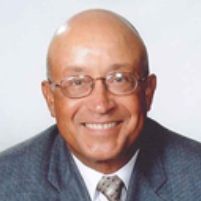Warren F. “Pete” Miller, Jr. has been selected by President Barack Obama to fill two posts that oversee each end of nuclear energy—supplying it and storing its waste. First, Miller was nominated to be Assistant Secretary for Nuclear Energy in the Department of Energy, and about a week later, he was also chosen to serve as director of Office of Civilian Radioactive Waste Management. Industry observers believe Miller’s latter role will involve carrying out Obama’s wishes to end the controversial project to store nuclear waste at Yucca Mountain, Nevada. Miller was confirmed by the Senate for the first position on August 7, 2009, but his confirmation for the radioactive waste role was held up by Sen. Lindsey Graham (R-South Carolina), who opposes the closing of Yucca Mountain.
Born in Chicago on March 17, 1943, Miller is one of five children raised by Warren F. Miller, Sr., and Helen Robinson Miller. His father worked as a milkman, delivering dairy products to homes in the Chicago area, and his mother worked as a secretary at the University of Chicago. Miller attended all-black inner city schools while growing up, and during high school, he enrolled in the Reserve Officers Training Corps, becoming commander of his ROTC unit.
Miller attended West Point when very few African-Americans were admitted to the military academy. Only ten others were at the school while Miller was there, and only one other African-American cadet graduated from his class of 800. After his graduation in 1964 with a Bachelor of Science in nuclear engineering, Miller received training at the
U.S. Army’s Airborne and Army Ranger schools.
His first Army assignment was in California with an air defense artillery unit. He sought out opportunities to work with computers, which led to his being sent to an Army supply school. After completing this training, Miller, then a captain, was shipped to
Vietnam, where he saw combat during his 13-month tour in Southeast Asia and was company commander for an early computer repairs supply unit.
Three months after leaving the Army, Miller entered Northwestern University in September 1969 to attend graduate school. In three years he earned both his master’s and doctoral degrees in nuclear engineering, and then stayed on at Northwestern as an assistant professor to teach and conduct research.
In 1974, Miller’s fascination with computers resulted in his leaving Northwestern for a position at the
Los Alamos National Laboratory in New Mexico to work with a new supercomputer. He wound up spending the next 27 years at the lab, rising from his entry-level job to associate lab director for math and physics, associate lab director for energy research, and senior research advisor.
From 1990-1992 Miller took time off from his laboratory work to teach at the University of California, Berkeley. He has also taught at Howard university and the University of Michigan. After retiring from Los Alamos in 2001, he became a private consultant and has taught part-time at Texas A&M University, along with serving as associate director of the school’s
Nuclear Security Science and Policy Institute.
During his Senate confirmation hearing, Miller told lawmakers that nuclear power must play a key role in the country’s energy strategy, and he promised, if confirmed, to help deploy a new generation of nuclear reactors. He also said he would form a blue ribbon panel to study strategies for managing spent fuel and nuclear waste, presumably to forge an alternative plan to Yucca Mountain.
Miller and his wife Judith have two sons.
-Noel Brinkerhoff







Comments